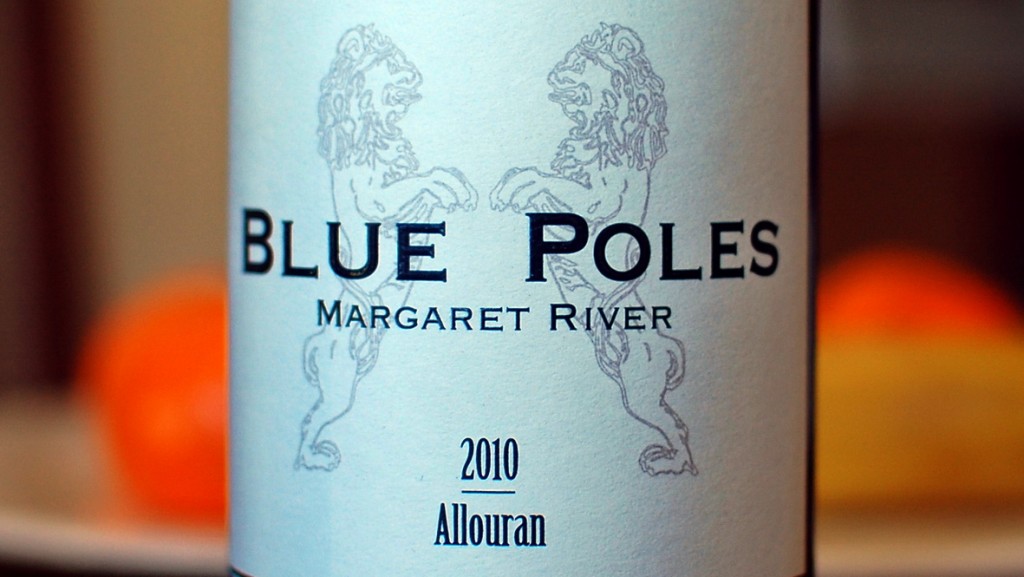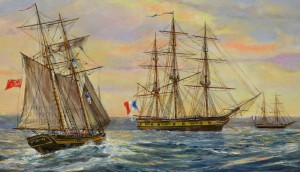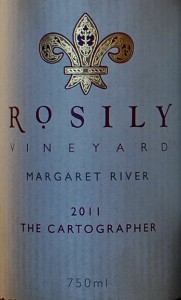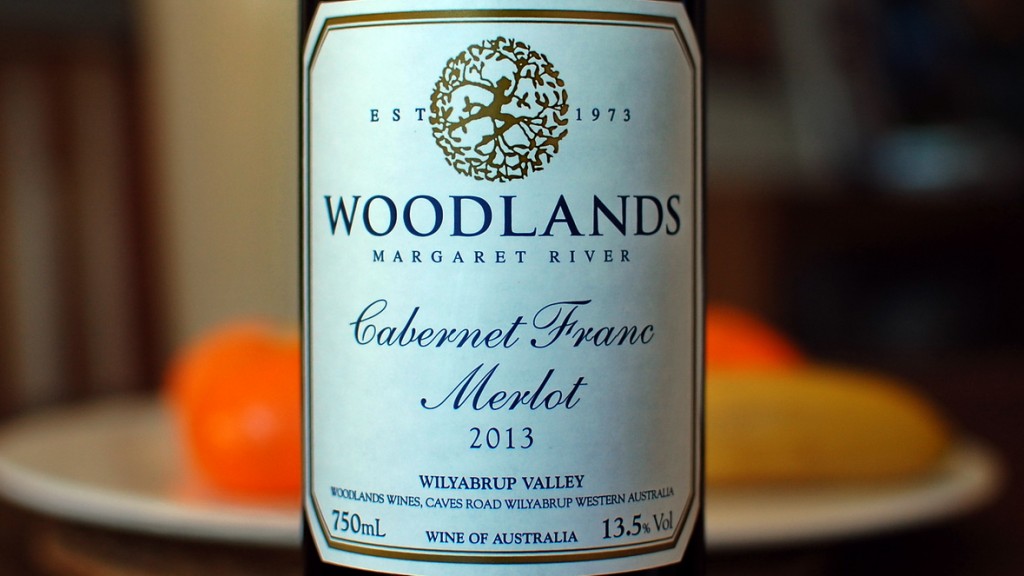You tend to get a bit jaded doing what I’m doing. Then a few wines come along that jump out of the glass and smack you around the head. That’s what happened when I opened that bottle of Blue Poles Allouran 2011 for the Bordeaux blends tasting last week. Look at me, look at me, look at me it said as it assaulted my senses with an array of heady aromas.
 Merlot became a dirty word after the movie Sideways, at least for serious wine lovers. For the rest of the world, it became a hugely popular soft red. Most Merlot made is soft, sweet and mushy. And cheap, yet the best Merlots in the universe cost more than the mighty Chateau Lafite. Petrus is the most expensive, and the tiny estate of Le Pin is right behind it. We’re talking $4000. Per bottle.
Merlot became a dirty word after the movie Sideways, at least for serious wine lovers. For the rest of the world, it became a hugely popular soft red. Most Merlot made is soft, sweet and mushy. And cheap, yet the best Merlots in the universe cost more than the mighty Chateau Lafite. Petrus is the most expensive, and the tiny estate of Le Pin is right behind it. We’re talking $4000. Per bottle.
Chasing the dream
Compared to the Haut Medoc with its array of imposing chateaux and their grand estates, Pomerol is sleepy hollow. No grand estates with pebbled driveways and manicured lawns here, just little farms really spread around a tiny village. There are no cafes, no restaurants, not even a place where you can taste the local wines. Not that different from some of our best wine regions really.
Many of our winemakers have dreamt of making great wines in the Bordeaux style. Mark Gifford and Tim Markwell certainly have, except they’re not winemakers but wine-loving geologists who travelled thousands of kilometers across Western Australia looking for a patch of gravelly soil that resembled the soils of Pomerol.
In 2001 they settled on a 50 acre block overlooking the Margaret River on Bramley River Road in Osmington, 15km east of the township of Margaret River. It had large sections of iron rich gravels overlying clay, slopes to the south and west, a cooler climate than the lower coastal vineyards promising longer ripening periods. More HERE.
Long Shots
That’s the kind of gamble our entrepreneurs of the vine take on: back their judgement with years of hard labour and bundles of hard currency. They had to keep working as geologists to keep the money coming in, and plant and cultivate the vineyard in their spare time. A decade later, they made a wine that vindicated their decision: The Blue Poles Allouran Merlot Cabernet Franc 2010, a lean and leafy Bordeaux style of great finesse and elegance.
The wines are still cheap because few people have heard of Blue Poles. The winery isn’t even listed in Halliday’s Wine Companion. The 2010 sells for $23 at Cloudwine, the 2011 for $26 at North Sydney Cellars (special offer) or $28 at United Cellars. It’s a bigger, richer wine but still made from two thirds Merlot and one third Cabernet Franc. More proof of concept for Gary and mark but not a lot of payback. The winery makes just 1500 cases a year.
 French Explorers
French Explorers
The West Australian coast is littered with ship wrecks, and in the early days it was the French and the Dutch paying most of the visits. Blue Poles’ label shows the roaring lion, the figurehead of the first French ship to map and land in Western Australia in 1772, under the command of Louis de Saint-Allouarn.
Hot on his heels came Comte Francois de Rosily, a French navigator who made the first chart of Flinders Bay. On the same voyage, the captain of his ship Le Gros Ventre claimed possession of the south west of Australia on behalf of France.
Mick Scott and Sam Castleden, the guys who run Rosily, planted the vines in the nineties and built the simple winery in 2001. In 2003 they won the award for the ‘Most Outstanding New Winery’ in W.A. More Here. Even though it’s produced lots of good wines in the years since, Rosily is still a simple place, and still largely unknown, but the 6000 cases they make sell out pretty fast.
Gourmet Traveller
 Rosily’s The Cartographer first came to my attention through a Gourmet Traveller Wine Tasting a couple of years ago, where it ended up in the top 8 Cabernets with a score of 95 points. The even better news was that it was a $20 wine rubbing shoulders with $100 wines – our kind of wine in other words. I went to the public tasting that followed just to check that the guys got it right. They did. The wine’s make-up is Cabernet Sauvignon 48%, Cabernet Franc 24%, Merlot 20% and Petit Verdot 8%, a classic Bordeaux blend from the Haut Medoc.
Rosily’s The Cartographer first came to my attention through a Gourmet Traveller Wine Tasting a couple of years ago, where it ended up in the top 8 Cabernets with a score of 95 points. The even better news was that it was a $20 wine rubbing shoulders with $100 wines – our kind of wine in other words. I went to the public tasting that followed just to check that the guys got it right. They did. The wine’s make-up is Cabernet Sauvignon 48%, Cabernet Franc 24%, Merlot 20% and Petit Verdot 8%, a classic Bordeaux blend from the Haut Medoc.
The 2010 was something of a benchmark for this style and I loved it for its leafy elegance, but here as well the 2011 has more flavour: a wonderful mix of berries, soft earth and and vanillan oak. The wine spends 18 months in French oak, 30% new. It’s deceptive with its silky charm and perfect balance, and it’s just $23 at the winery.
Old Roots
Woodlands was one of the early Margaret River wineries, established by David & Heather Watson on Caves Road in Wilyabrup. After early successes, the fruit was sold to other wineries in the nineties while the Watsons put their sons Stuart and Andrew through high school. Eventually the sons took over and now run the beautiful winery that produces 9,000 cases of wine, including some pretty special ones priced over $100.
Woodlands’ bread-and-butter wines are in the low twenties, and among these is a Cabernet Franc Merlot blend – we’re in St Emilion now – made in very small quantities. Last year, we toured Margaret River and Andrew Watson gave us some samples that included the 2013 Cabernet Franc Merlot. By the time we got back to Sydney and tried to order some, the wine had sold out.
Almost a year later, it popped up on the Prince Wine Store website, on special for $22. No idea where they found it, it was all gone within days – probably helped by a brilliant review from Mike Bennie that finished with the words, ‘It’s beautiful to drink. It’s a ludicrously price for its perceived quality, for me. 94 Points.’
An easier option is the Woodlands Cabernet Merlot 2013, which is made in much larger quantities from 65% Cabernet Sauvignon, 23% Merlot, 10% Malbec and 2% Petit Verdot. It’s got a bit more body but much the same polish, and will probably improve for 5 years. It’s just $22 at Winesellersdirect.
The Bottom Line
It’s very simple: these three wineries are purists in their own way, they know exactly what style of wine they want to make. That these wines are affordable is what Best Wines Under $20 is about, and I bless these guys for not being greedy while they’re developing these wonderful styles.
